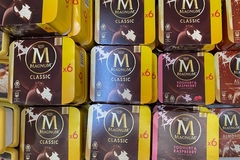
- Industry news
Industry news
- Category news
Category news
- Reports
- Key trends
- Multimedia
- Journal
- Events
- Suppliers
- Home
- Industry news
Industry news
- Category news
Category news
- Reports
- Key trends
- Multimedia
- Events
- Suppliers
Reformulation strategies: Key ingredient suppliers leverage functional solutions for streamlining recipes

21 Sep 2022 --- With players in the food industry consistently carving out pathways for flavor and functional innovation, ingredient suppliers offer aid in the discoveries of new and trailblazing methods for market-ready and ergonomic reformulation solutions.
FoodIngredientsFirst speaks to key suppliers Hydrosol, Sweegen and Kerry on their broadly applicable product developments that help food brands streamline their formulations to address sugar reduction challenges, locust bean gum replacements and sodium-reduced offerings.
Meat and dairy reformulations
Stabilizing and texturing specialist Hydrosol’s current innovations include various concepts for the production of low sugar and low fat dairy and deli products that are specially designed to meet the needs of children.

“We developed these together with our sister companies SternVitamin and OlbrichtArom. In addition, we offer various system solutions in the meat sector with which meat and sausage producers can easily produce sodium-reduced cooked sausages and cooked ham,” details Dr. Dorotea Pein, head of product management at Hydrosol.
“The dairy industry can use our solutions to produce reformulated products like sugar-reduced mixed milk drinks or milk-juice drinks, as well as fermented milk  Hydrosol has released new innovations for low sugar and low fat meat and dairy reformulations.products such as yogurt, drinking yogurt and curd desserts,” she comments.
Hydrosol has released new innovations for low sugar and low fat meat and dairy reformulations.products such as yogurt, drinking yogurt and curd desserts,” she comments.
“With the functional system for pudding in combination with a specific vegetable fiber, sugar-reduced, low-fat and fiber-enriched end products are created. The Clean Label system for ice cream, on the other hand, forms the basis for reformulated ice cream with 30% less sugar. Although the system contains no classic emulsifiers, it enables a particularly creamy mouthfeel in the end product.”
In the cheese segment, Hydrosol has developed a stabilizing system for “squeezable” processed cheese preparations from tubes, stand-up pouches or similar soft packaging. The declaration-friendly end product does not require the addition of melting salts or table salt. For the premium recipe, 50% cheese is processed.
“In the deli sector, the clean label system for low-sugar ketchup allows manufacturers to use additional vegetables in combination with tomatoes,” explains Dr. Pein. “This way, vegetables can be offered in a ‘hidden’ form. The clean label solution for French fries sauce also scores with nutritional benefits, such as a high fiber content.”
Technicalities of sugar and fat replacement
Sugar and fat are flavor carriers, they give the products body, texture and a pleasant mouthfeel. Sugar also binds water and is very soluble, while fat influences melting behavior and is important for the absorption of fat-soluble vitamins.
For technological and taste reasons, Dr. Pein at Hydrosol highlights that sugar substitution with intense sweeteners or alternative sweeteners alone is usually not an alternative. The aim is to produce the proven properties of the end product in terms of taste, texture and appearance, despite the lower sugar and fat content.
“To balance the positive technological properties of sugar and fat, we rely on carefully selected hydrocolloids and plant fibers. They give the different end products a pleasant texture that supports, for instance, the perception of sweetness,” she explains.
“In various application trials, we determine the optimal interaction of the individual components to achieve the desired properties in the end product. For this purpose, we use common equipment that is also used in the dairy, deli and meat industries. In this way, simple production and optimal product properties can be combined with a nutritionally optimized recipe.”
Switching out locust bean gum
In its latest launch, Kerry unveiled Sherex Supreme, an innovative texture system that replicates the functionality of locust bean gum (LBG) in hard-pack ice cream.
 In its latest launch, Kerry unveiled Sherex Supreme, an innovative texture system that replicates the functionality of locust bean gum (LBG) in hard-pack ice cream.Over recent years, high demand, limited availability and extreme price increases for LBG have led to a search for solutions to deliver and match LBG’s functionality at a reduced cost.
In its latest launch, Kerry unveiled Sherex Supreme, an innovative texture system that replicates the functionality of locust bean gum (LBG) in hard-pack ice cream.Over recent years, high demand, limited availability and extreme price increases for LBG have led to a search for solutions to deliver and match LBG’s functionality at a reduced cost.
The company’s validation trials on premium, budget and standard hard-pack ice creams show that Sherex Supreme delivers the texture, mouthfeel and other taste attributes consumers expect from traditional ice cream, all at up to a 50% lower cost and with no change to the label or manufacturing process.
“This cost-saving is very attractive and a huge driver of demand when you consider the rising inflation costs ice cream manufacturers have to contend with alongside,” highlights Tricia Hayes, global senior director for emulsifiers, texture systems and gum acacia at Kerry.
“Importantly, we wanted this solution to be seamless for manufacturers to implement, therefore it requires no change to the ingredient label or manufacturing process, the only change is cost.”
Demand for LBG has risen in recent years because of its high degree of functionality and suitability for many rapidly growing plant-based product applications. Still, supply has not kept up given the 10-year growth period required for the carob tree to bear the LBG-producing pods.
Ultra high intensity sweetness
In line with the clean label movement, health-conscious consumers have been turning away from artificial sweeteners, which has been fueling interest in zero-calorie sweeteners from plants such as stevia and fruit-based sweet proteins like brazzein and thaumatin.
Sweegen’s offering of brazzein, a sweet protein dubbed “1,500 times sweeter than sugar,” offers the potential of sugar-reduced formulations addressing diets such as Keto, diabetes or low-to-no carbohydrate lifestyles.
Found sparingly in nature, brazzein derives from the West African climbing plant’s fruit, oubli. To scale brazzein sustainably, Conagen produces it by a proprietary precision fermentation process, a technology producing clean, nature-based ingredients.
Meanwhile, stevia remains naturally appealing to consumers. With today’s stevia technology, confectionery manufacturers can now make indulgent, better-for-you products with less sugar and low calories, explains Casey McCormick, VP of global innovation at Sweegen.
“Stevia enables brands to diversify their product lines and increase their consumer base,” he comments.
Sweegen’s Signature Stevia portfolio is non-GMO and the heart of the company’s confectionery solutions for customizing specific applications, says McCormick. “Our Natural Flavors for Taste Modulation portfolio can customize bitter blockers and other sweetness enhancers to focus on texture, mouthfeel and bulk.”
As sugar reduction continues to top the trend chart in food and beverages, Sweegen is consistently innovating ways for brands to improve flavor profiles while making better-for-you products.
This year, the company also launched its Bestevia LQ, a collection of liquid stevia-based sweeteners.
By Benjamin Ferrer










